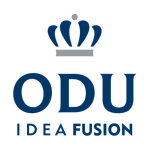Below is a summary of the abstract you submitted. Presenting author(s) is shown in bold.
If any changes need to be made, you can modify the abstract or change the authors.
You can also download a .docx version of this abstract.
If there are any problems, please email Dan at dar78@pitt.edu and he'll take care of them!
This abstract was last modified on May 9, 2016 at 2:48 p.m..

As part of the HHMI SEA-PHAGES program, the Old Dominion University Phage Hunters have isolated over a dozen mycobacteriophages. Bacteriophages are ubiquitous in nature and were isolated from soil samples taken from the Tidewater region of Virginia during the first semester of the Phage Discovery and Genomics class. The successful method of isolation was through the use of enrichment (not direct plating) with the host Mycobacterium smegmatis mc<sup>2</sup>155. Many rounds of purification were completed to isolate pure phage using the method of picking a plaque and plating out dilutions as well as using the stick streak method. High titer lysates were produced to isolate viral genomic DNA.
Subsequently, DNA restriction endonuclease mapping revealed unique phages based on the digestion profiles compared to gels submitted to the Actinobacteriophage Database. Transmission electron microscopy revealed that each phage displayed morphological characteristics consistent with a siphoviridae morphotype. Two of these newly isolated phages, named HedwigODU and Goldilocks, were chosen for genomic sequencing, analysis and annotation. During the Spring 2016 semester, students in the Phage Discovery and Genomics class annotated and focused on independent projects to understand the genome of these two mycobacteriophage. The genome of HedwigODU consisted of 59,812 bp in length with a nucleotide sequence similar to cluster K (subcluster K1) mycobacteriophages. The genome of Goldilocks comprised of 75,728 bp in length and was characterized as a cluster E mycobacteriophage. HedwigODU and Goldilocks had very few tRNA elements, numerous hypothetical proteins, with synteny among the structural genes and conserved terminase, portal proteins, lysins and both contained a translational frameshift as well as many reverse genes.


